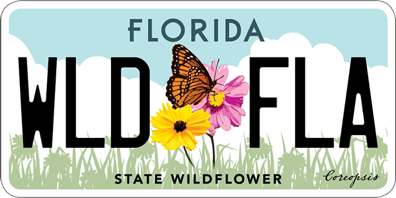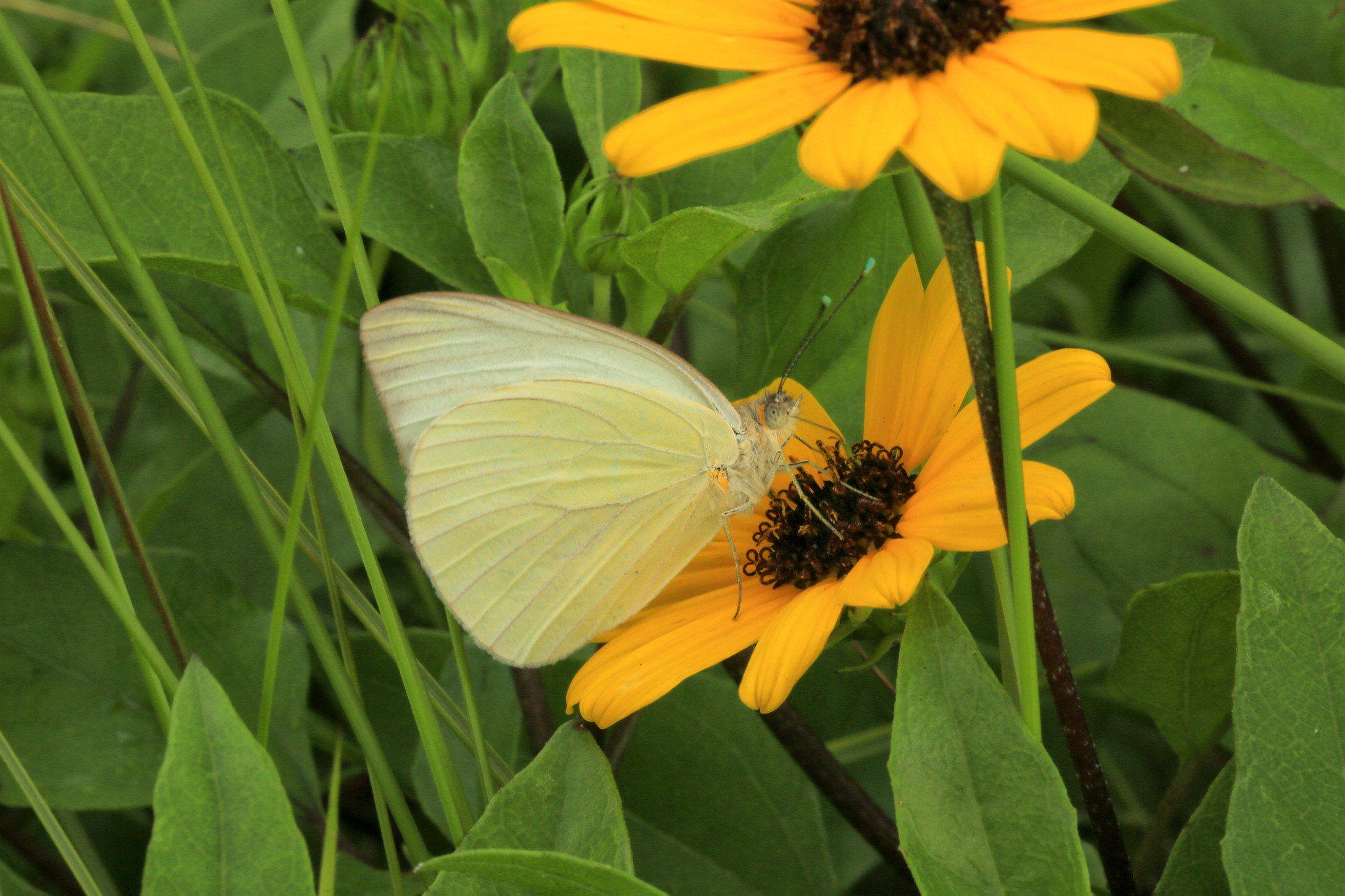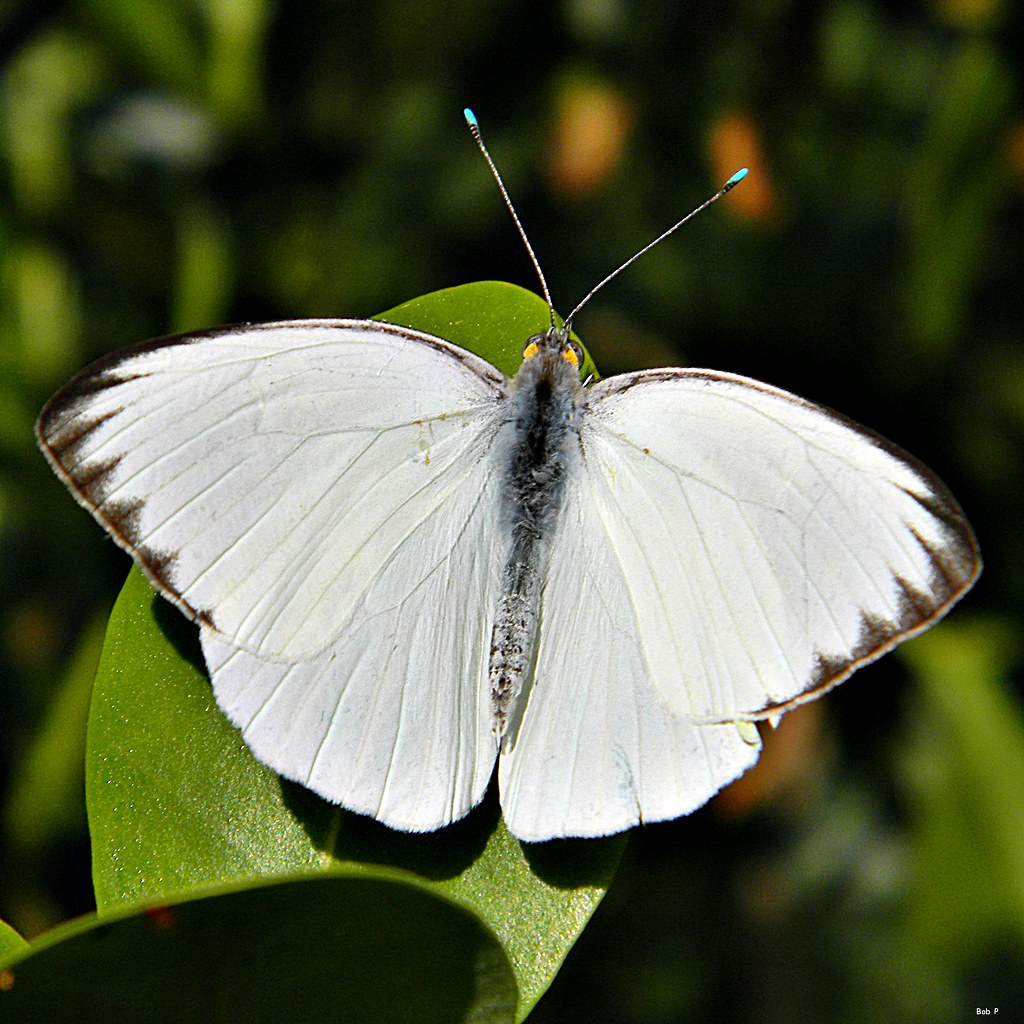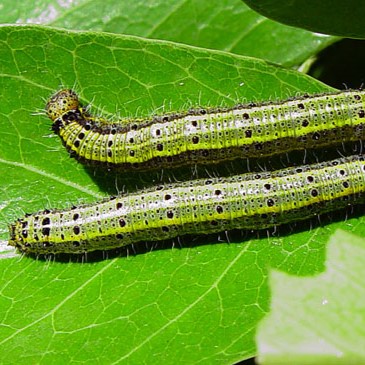Great southern white
by Elora Pfriender
“Know your native pollinators” is a series of articles that will help you identify and appreciate Florida’s varied pollinators, including bees, wasps, butterflies, moths, beetles, flies, birds and bats. Pictured above: Great southern white (Ascia monuste) by Alan Cressler.
Like many Floridians, these unassuming pollinators love spending warm, sunny days at the beach — and some of them even get a tan in the summer!
CLASSIFICATION
Class: Insecta
Order: Lepidoptera
Family: Pieridae
Genus species: Ascia monuste
FUN FACT
Although the Great southern white is found throughout Florida, it favors seaside habitats and is mostly restricted to South Florida in the winter months.
IDENTIFICATION
As its common name suggests, the Great southern white can be distinguished from other Florida “white” butterflies — such as the similarly widespread Checkered white (Pontia protodice) — by its larger size, with a wingspan of 1.5–2.25 inches. Unlike many other native whites and sulphurs, Great southern whites lack distinctive black spoting. Their coloration is sexually dimorphic: males have solid white wings edged with a thin black line at the forewing apex year-round, while females bear an additional dark spot near the apex and may develop darker, light-gray wings depending on daylight hours during metamorphosis. Both sexes share the species’ signature turquoise antennal clubs.
FORAGING PREFERENCES
Members of the mustard and cabbage family (Brassicaceae) are the Great southern white’s preferred host plant, including Coastal searocket (Cakile lanceolata) and Virginia pepperweed (Lepidium virginicum). Although it is often dismissed as a weed, Virginia pepperweed is a vital host for many Pieridae butterflies, including the Great southern white. Other suitable native options include Saltwort (Batis maritima) and Limber caper (Cynophalla flexuosa). Adults nectar on a wide range of native coastal plants, particularly Christmasberry (Lycium carolinianum) and Seaside oxeye (Borrichia frutescens).
HABITAT
Although the Great southern white is found throughout Florida, it favors seaside habitats, where many of its native host plants thrive in beach dunes and coastal hammocks. It also occurs in salt marshes, although during colder months it is largely restricted to southern Florida. Outside of Florida, the Great southern white ranges west along the Gulf Coast into southern Texas and south through Mexico, Central America and South America. They are migratory by nature, but occasionally stray into the northern continental United States.
DID YOU KNOW?
The larvae of Great southern whites — and their relative, the Cabbage white (Pieres rapae) — are widely regarded as pests because of their host plant preferences. While some mustard and cabbage family members are treated as weeds or wildflowers, the genus Brassica also gives us many widely eaten cruciferous vegetables: arugula, bok choy, broccoli, Brussels sprouts, cabbage, cauliflower, collard greens, kale, mustard greens, rutabagas, turnips, wasabi and watercress — just to name a few!
LIFE CYCLE
Females lay yellow, oblong or spindle-shaped eggs singly on the leaves of their host plants. Larvae are bright greenish yellow with black spots and longitudinal gray stripes that thicken as they mature. As they feed on Brassicaceae leaves, the mustard oils they ingest make them less appetizing to would-be predators. The chrysalises are white with black markings, with females often slightly darker in color.
References:
- Barros-Bellanda, Helen C. H. and Fernando S. Zucoloto. “Influence of chorion ingestion on the performance of Ascia monuste and its association with cannibalism.” Ecological Entomology, Dec. 2001
- “Cakile lancelota.” Florida Native Plant Society
- “Great Southern White.” Alabama Butterfly Atlas
- “Great Southern White.” Florida Museum
- “Great Southern White.” Institute for Regional Conservation
- Hecker, Forest. “What Is That Lawn Ornament? Butterfly Super Host?! Native Peppergrass!” UF/IFAS Extension Sarasota County, March 2024
- Lotts, Kelly and Thomas Naberhaus, coordinators. “Great Southern White.” Butterflies and Moths of North America, 2024



